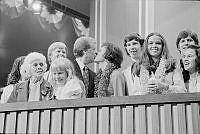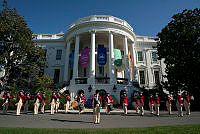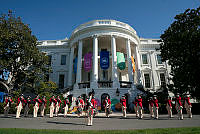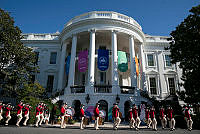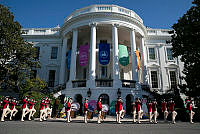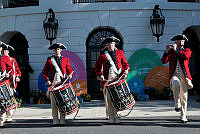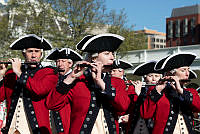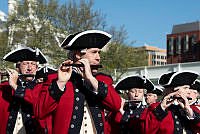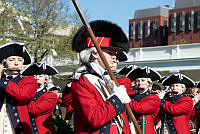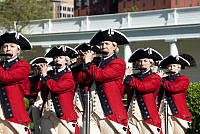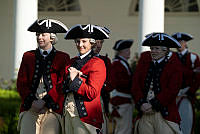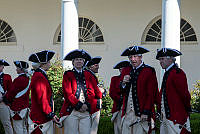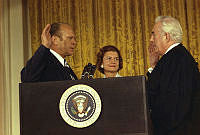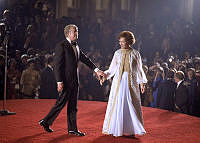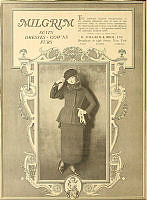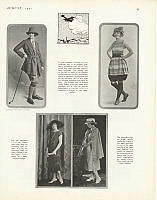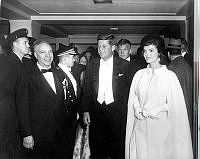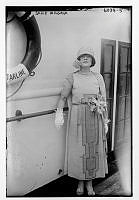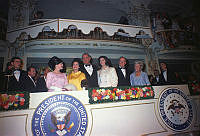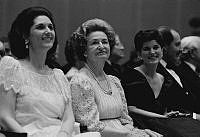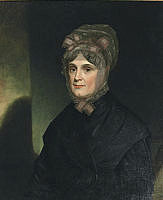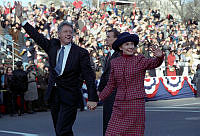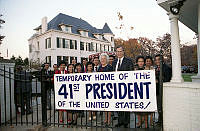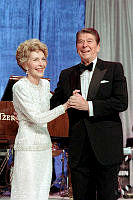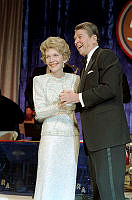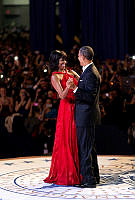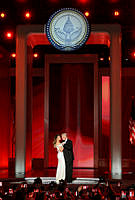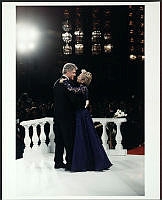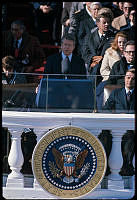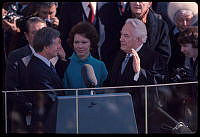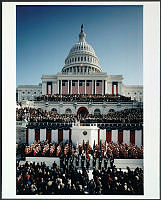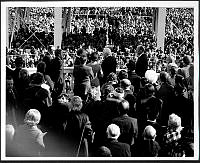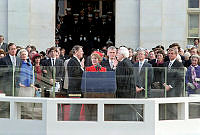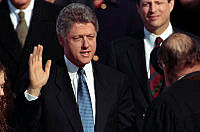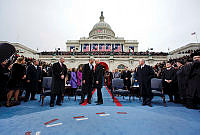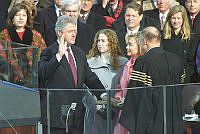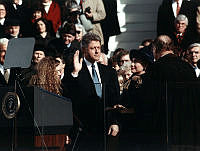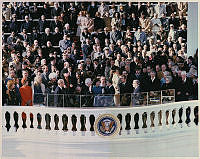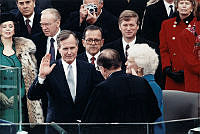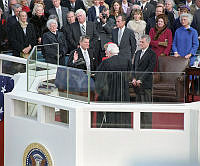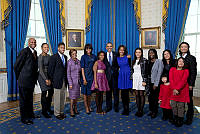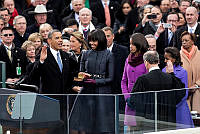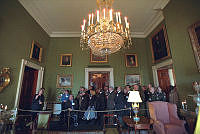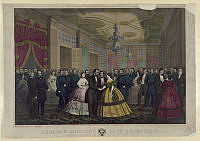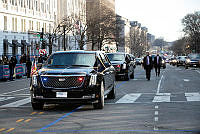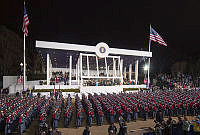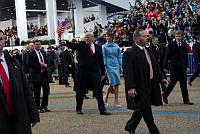Presidential Inaugurations
Copyright © White House Historical Association. All rights reserved under international copyright conventions. No part of this article may be reproduced or utilized in any form or by any means, electronic or mechanical, including photocopying, recording, or by any information storage and retrieval system, without permission in writing from the publisher. Requests for reprint permissions should be addressed to books@whha.org
Gallery
-

The first presidential inauguration took place at Federal Hall, New York.
Library of Congress -

Inauguration of James Buchanan, President of the United States, at the East Front of the U.S. Capitol on March 4, 1857.
Library of Congress -

President Ulysses S. Grant delivering his inaugural address on the East Portico of the U.S. Capitol, March 4, 1873.
Library of Congress -

President Chester Arthur accompanies President-elect Grover Cleveland from the White House to the inauguration, March Cover of Harper's Weekly, March 15 1885.
White House Historical Association -

More than 200,000 spectators witnessed the inauguration of Theodore Roosevelt in March 1905.
Library of Congress -

The Inauguration of President William Howard Taft on March 4, 1909 was hindered by a severe blizzard.
Library of Congress -

President Calvin Coolidge rides in a convertible automobile escorted by a mounted honor guard and cavalry escort adding to the pageantry of his Inaugural Parade, March 4, 1925.
Library of Congress -

President Franklin D. Roosevelt’s unprecedented third inauguration on January 20, 1941.
Library of Congress -

President Harry S. Truman's inauguration on January 20, 1949, was the first televised inauguration in the United States.
Architect of the Capitol, Courtesy of the Library of Congress -

Supreme Court Chief Justice Earl Warren administering the oath of office to Richard M. Nixon on the East Portico of the U.S. Capitol, January 20, 1969.
Architect of the Capitol photo courtesy of the Library of Congress -

Since the 1981 inauguration of Ronald Reagan, the inaugural stand has been set up on the West Front of the Capitol instead of the East Front.
Architect of the Capitol photo courtesy of the Library of Congress -

Supreme Court Chief Justice William Rehnquist administering the oath of office to William J. Clinton on the West Front of the U.S. Capitol, January 20, 1993.
William J. Clinton Presidential Library and Museum/Library of Congress -

President Barack Obama and First Lady Michelle Obama walk in front of the Presidential limousine on Pennsylvania Avenue at 15th Street, N.W., Washington, D.C., during the Inaugural Parade on January 20, 2009.
Library of Congress -

President Donald Trump being sworn in on January 20, 2017 at the U.S. Capitol in Washington, D.C. He holds his left hand on two versions of the Bible, one childhood Bible given to him by his mother, along with Abraham Lincoln's Bible.
Courtesy of the White House
On April 30, 1789, George Washington took the oath of office in New York City. Later he said of this new presidential role, "I walk on untrodden ground." Inauguration Day began with the sounds of ceremonial artillery and church bells ringing across New York City, our nation's first capital. At noon Washington made his way through large crowds to Federal Hall where both houses of Congress were assembled. On the second-floor balcony facing the street he was administered the oath of office by Robert R. Livingston, the Chancellor of New York, and officially became the first president of the United States.
Constitutional guidelines for inaugurations are sparse, offering only the date and the words of the oath. All else is driven by tradition. After the oath is administered the president gives an address, usually one stressing national unity.
In 1801 Thomas Jefferson was the first to be sworn in as president in Washington, D.C., the location chosen for the permanent capital. After his second inauguration in 1805 Jefferson rode on horseback from the Capitol to the President's House amid music and a spontaneous gathering of mechanics from the nearby Navy Yard – a procession that grew into today's inaugural parade.
Inaugural events, including parades, have become more elaborate over the years and have evolved into spectacular entertainments. Selection of parade participants is a traditional way for a president to make a statement about his beliefs, as Abraham Lincoln did in 1865 by inviting African Americans to march for the first time.
Presidents have celebrated in many ways since George Washington danced the minuet after his inauguration. James Madison and his wife Dolley were the guests of honor at the first official inaugural ball, held at Long's Hotel in Washington, D.C. Since that time, such activities have been broadened to include a cross-section of the American population. Receptions, balls, and other public events reflect the president’s need to include many diverse groups in the transition of power, even, at times, officially sanctioned protesters. More than a celebration of one person’s rise to power, modern inaugurations validate the republic’s democratic processes. Modern inaugural festivities reflect not only the president they honor, but also the desire of many Americans to celebrate our nation's rich history and the transfer of presidential power.


